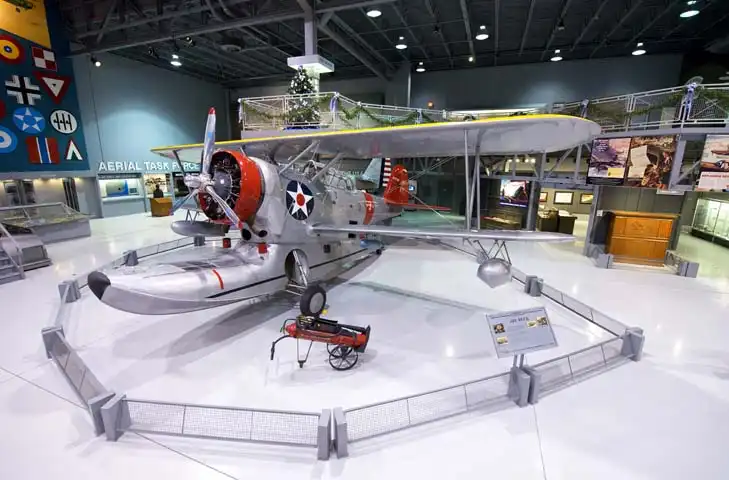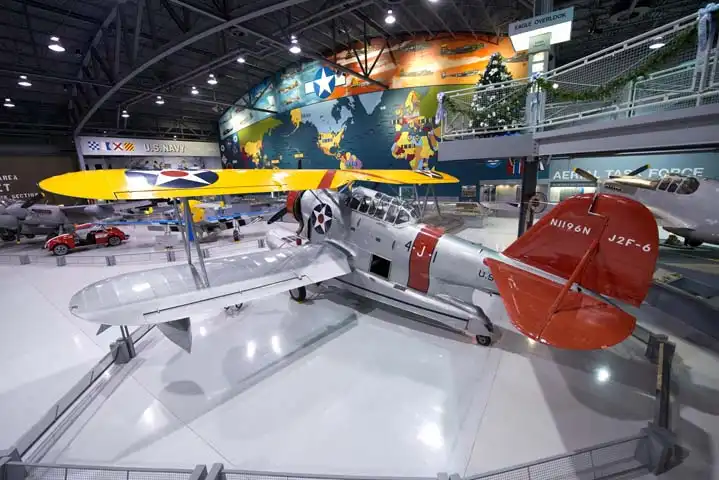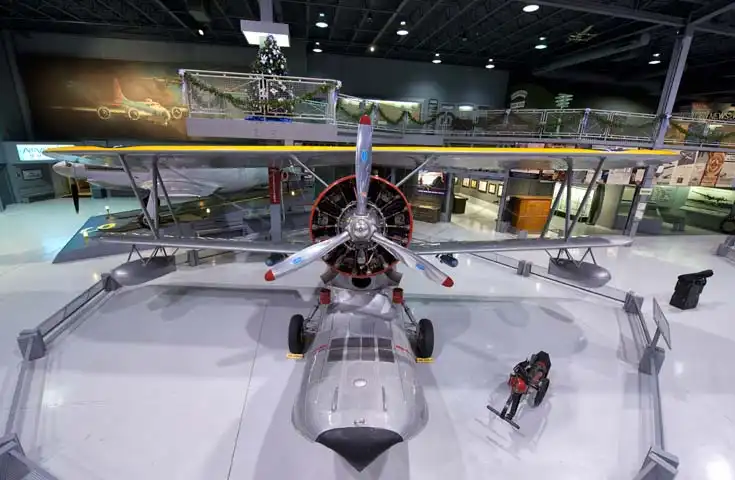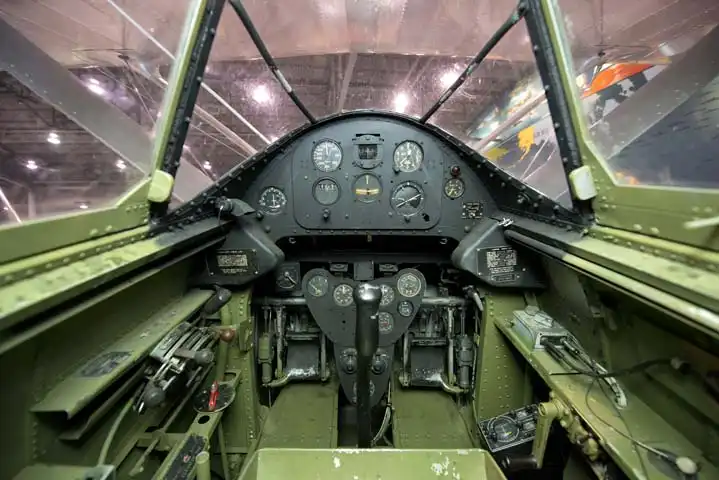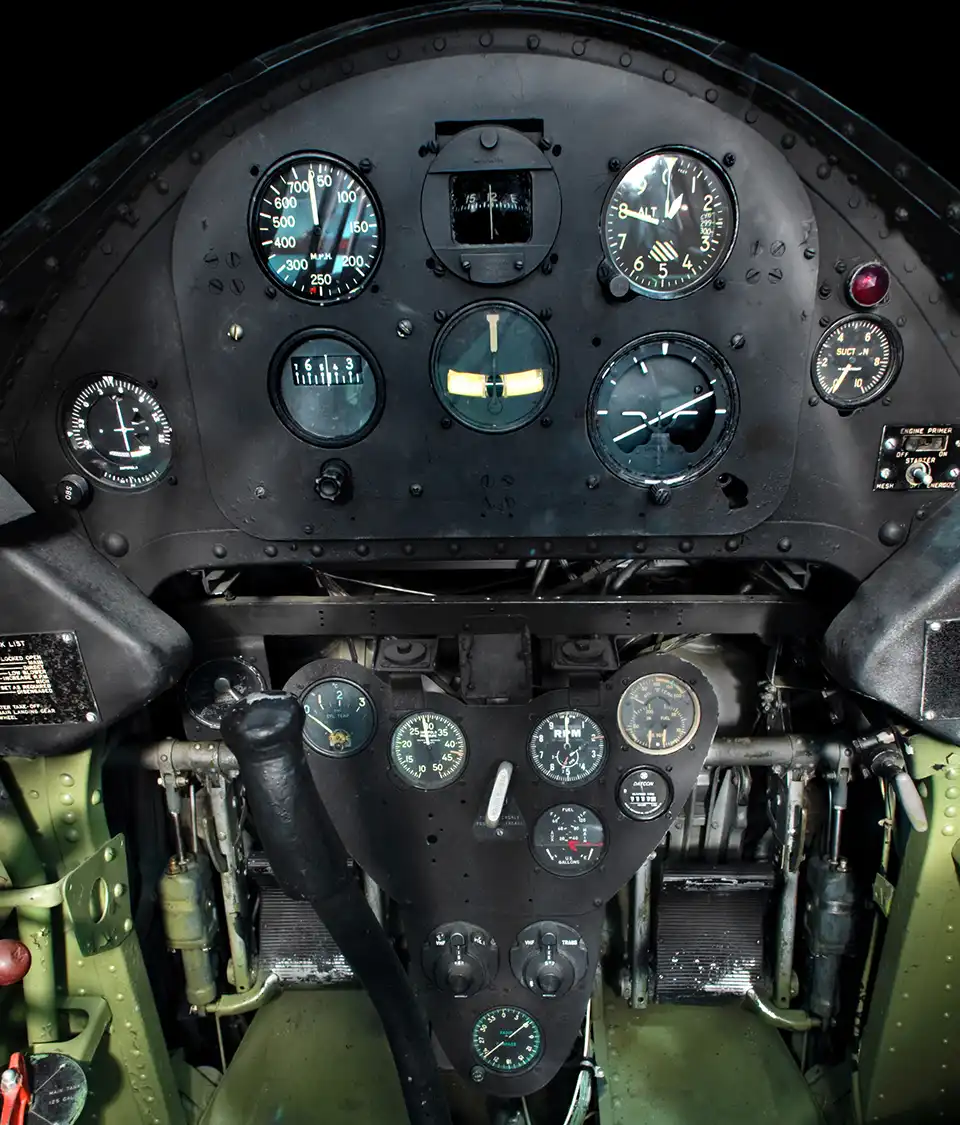1944 Grumman (Columbia) J2F-6 Duck - N1196N
Location: Eagle Hangar
The Duck was technically the first flying boat built by the Grumman Aircraft Engineering Corporation. It evolved from the Loening OL amphibian after Grumman obtained the rights to the design. Designed as a carrier-based utility transport, its duties included observation/scouting and what later was known as COD. (Carrier Onboard Delivery). Other military uses included transport, photoreconnaissance, rescue, bombing, and depth-charging. Ducks served with the U.S. Navy, Marines, and Coast Guard before and during World War II.
Foreign air forces that have used the Grumman amphibian include those of Argentina, Colombia, and Mexico. In civilian service, Ducks have been used in movies, as firefighters, and as air taxis. New York’s Dawn Patrol Seaplane Base used this aircraft to ferry businessmen between Long Island and Manhattan. Today, most surviving Ducks are in museums, though a handful are maintained in flying condition.
On April 25, 1933, Grumman test pilot Paul Hovgard flew the prototype, designated XJF-1, on its first flight, taking off from a grass strip in front of the Grumman factory at Farmingdale, New York. The Grumman Corporation and the Columbia Aircraft Corporation of New York built a total of 632 Ducks, in several versions, by the end of WWII. After WWII, the U.S. Air Force used six Ducks for air-sea rescue missions with the 10th Air Rescue Squadron and re-designated these aircraft as OA-12s.
Although the aircraft was designed for a crew of two, with a pilot and rear gunner under the canopy, some variants added a third crew position for an observer or radio operator. There was room for two passengers in a compartment in the main float just aft of the lower wing. When the aircraft was used for medical evacuation, a stretcher replaced the passenger seating.
As one of the final Ducks ordered by the U.S. Navy, and built under license by Columbia in 1944, EAA’s J2F-6, Bu 36976, saw military duty during WWII with U.S. Naval Utility Squadrons 4 and 16 and also served aboard the USS Franklin (CV13).
This aircraft first appeared on the U.S. civil register in 1963 as owned by C. E. Crosby of Bellingham, Washington. It then passed through several owners before being purchased by Tallmantz Aviation, the famous aviation film company owned by Hollywood stunt pilots Frank Tallman and Paul Mantz.
Carl Mies of Filter Products in Louisville, Kentucky, acquired the aircraft in 1972. In 1974, Mies donated the Duck to the EAA Aviation Foundation. Some years later, EAA volunteers led by EAA member John Pereira spent 14 months restoring the aircraft with the cooperation of the Grumman Corporation at their facility on Long Island. The work was completed in 1982 and placed in the EAA AirVenture Museum when it opened in 1983.
Length: 34 feetWingspan: 39 feet
Height: 13 feet, 11 inches
Empty Weight: 5,480 pounds
Gross Weight: 7,700 pounds
Crew: 2
Powerplant: Curtiss-Wright R-1820-54
Horsepower: 900 hp
Maximum Speed: 190 mph
Cruise Speed: 155 mph
Armament: .30 caliber Browning machine gun, 650 pounds of bombs or depth charges
